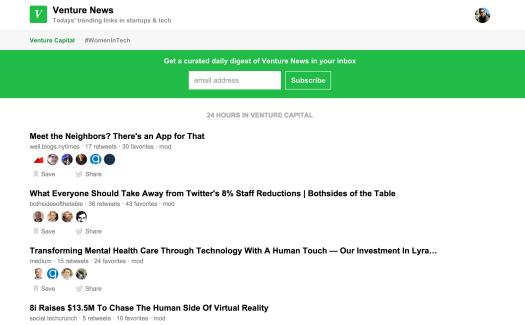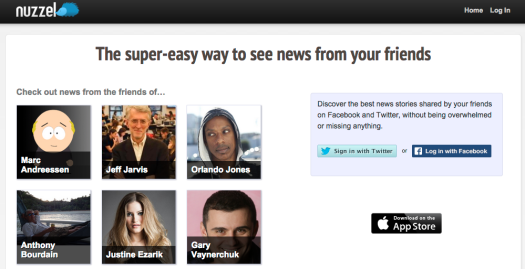Inspired by Steve Schlafman’s list of favorite products, I’m going to start keeping tabs on my favorite products on a yearly basis. As a product nerd, I’m always checking out new products and evaluating them against the tried-and-true products in my life. It’ll be interesting to see how things evolve over a few years. Which products stick, and why products get replaced? We’ll see!
Consumer software products
The easiest way to see this is via my home screen. I’ve recently been carrying around both an iPhone 6s and OnePlus One, so we’ve got two of them!

#Homescreen2016
Homescreen 2016
- Gmail, Google Calendar, Google Drive – Absolutely necessary for both work and life. Couldn’t function without these. Google Search goes here too.
- Slack – My favorite work-related app. It may be the only work-related app where I routinely use the word “delight” while describing it.
- Trello, JIRA – Task management tools always feel burdensome and clunky. Is it just the nature of the problem? Still, I couldn’t do my job without these.
- Facebook – Absolutely necessary as a social utility.
- Whatsapp – My connection to loved ones.
- Twitter – My favorite app. I spend more time on Twitter than any other app.
- Timehop – This recently popped back into my life. After years of social media activity, Timehop is now super valuable. It is pure nostalgia. However, I agree with the many current 1-star reviews — not a fan of the new design.
- Snapchat – Authentic, fleeting, fun. I admire how quickly Snapchat innovates, and how they’ve pioneered a new form of design that is truly native to mobile. I only wish more of my friends used Snapchat.
- Venture News – A personal side project that surfaces trending links in the VC community. Under the hood, I’ve hacked in some hidden features which I should make public one day 🙂
- Instagram – A visual magazine that is beautiful and easy to use.
- Pinterest – My go-to for recipe search.
- Product Hunt – Major FOMO, all day, every day. So many cool things being built.
- Panda – One-stop shop for Hacker News, Inbound, Growth Hackers, Designer News, and Dribbble on mobile.
- Pocket – Satisfies the packrat in me. I have to admit that I rarely go back to these links though.
- Live BART – The perfect simple, single-use-case app.
- Yelp – I’d welcome a better alternative, but until then, Yelp is for the foodie in me. And man do I love food.
- Flixster – Easiest way to find movies playing nearby.
- Waze – I trust it will save me time on any drive.
Other consumer software products
- Momentum – Helps for maintaining focus, but I primarily use it because it makes my new tabs beautiful.
- Github – Best place for code to live.
- vim – THE text editor.
- Medium – I’ve found myself moving some Twitter time over to Medium. It is becoming a daily destination for long-form content.
- Stitcher – So many great podcasts.
- Chrome / Safari – Chrome on desktop and Android, Safari on iOS.
- Pandora – Most people I know prefer Spotify. I like having a few themed radio stations and then just letting them play.
- Hype Machine: Random trending stuff.
- Shazam: When a good new song pops on the radio… or when a familiar song comes on, but I just can’t remember the name or artist.
- Netflix – Stranger Things, House of Cards, Bloodline.. Netflix is killing it with exclusive content.
- Hulu – When I can’t wait for the whole season of something to appear on Netflix. I’ve been using Hulu less frequently this year because binge watching on Netflix is too good.
- HBO GO – Westworld. Game of Thrones.
- Showtime Anytime – Homeland.
- Lyft / Uber – Almost interchangeable, but every driver I talk to says that they like Lyft more. So, if the cost is in the same ballpark, I’ll almost always Lyft.
- Airbnb – I can’t even remember that last time I booked a hotel aside from recent weddings.
Consumer hardware products
- iPhone 6s – So nice, although it has battery life issues 😦
- Apple Watch – Most helpful for the notifications, but the killer app is still unclear. Folks say fitness tracking, but I hate working out with a watch on.
- Macbook Pro – Has been my go-to laptop for 10 years but the keyboard is getting worse with each iteration. The newest Macbook’s keyboard is so terrible that I refuse to “upgrade” to it. The missing ESC key is also no good. Perhaps it is time to give Lenovo a try.
- Apple TV (4rth generation) – Makes TV great again.
- Apple iPod Nano 6th generation – For running. I don’t like wearing or carrying any devices when I run. This little clip-on device is perfect.
- OnePlus One – My Android test device. Great for testing, and getting acquainted with that other mobile OS.
- Bose Soundlink Mini II – I always take this when I travel for on-demand tunes.
Physical products
- MUJI pen and notepad – High enough quality that I enjoy using them, yet cheap enough where they feel relatively disposable. Pens and notepads should be used generously, and I don’t like when they feel too nice or I’m unlikely to use them as much as I should (I have this problem with Moleskine notebooks).
- DSPTCH Bookpack – After 9 years with my Northface backpack, I replaced it with the Bookpack. I needed a backpack for everyday commuting, and this is everything I need. Simple. Solid construction. Just big enough to fit a laptop, notebook, a few books, an umbrella, and a thin hoodie. Nice.
- Davek Solo umbrella – Got it in an online sale 6-7 years ago and it feels as good as ever. Built to last with a lifetime warranty.
- Rain Design mStand – Is there a better laptop stand? Still searching for a cordless keyboard and mouse that I love.
- Ray Ban Aviator Classic (Silver) – Love these. Hoping to add Snap Spectacles here next year!
- American Giant Classic Full Zip Hoodie – Heard the buzz about this hoodie years ago and ignored the hype. After trying one on this year, I get it. This is a good hoodie. I wear it every day.
- ECCO Helsinki shoes – I’ve gone through pairs of these for at least 10 years. Comfortable, slip-on, and don’t look too bad.
- Rainbow Single Layer sandals – Terrible for a week, and then the most comfortable pair of sandals ever.
- ASICS Gel-Cumulus 18 – Simple, cushioned, no support. Just what I need in a running shoe.
Newsletters
- Axios AM – Currently, my favorite newsletter.
- The Lefsetz Letter – This guy just gets media, music, and culture. He also writes with attitude. I don’t always agree, but I respect the point of view. Always a good read.
- Mattermark Daily – Nick Frost does an excellent job of curating a few reads every day. Probably the email newsletter that I most frequently open.
- Data Driven Daily: Organized, small nuggets of data-driven wisdom. It is like someone is writing a seminal book on being a data-driven, and sharing it small section at a time.
- The Skimm – Fun and informing.
Blogs
- Stratechery – I subscribed finally subscribed this year. Great insight and commentary.
- Benedict Evans – Insightful. Also, subscribe to the newsletter.
- AVC – A classic. The daily posts and engaged community make it one of the best places for water cooler talk in the startup community.
…besides that, I get a smattering of blog posts on Twitter and Venture News
Podcasts
- This Week in Startups – Jason is my favorite interviewer in tech.
- Reboot – I love how Jerry touches on the personal and psychological side of tech. Given the need the atmosphere of always needing to be “absolutely killing it”, this stuff is absolutely necessary.
- 20 Minute VC – Great quick listens for the commute.
- The Tim Ferriss Show – Interesting lifehacker-ish stuff.









